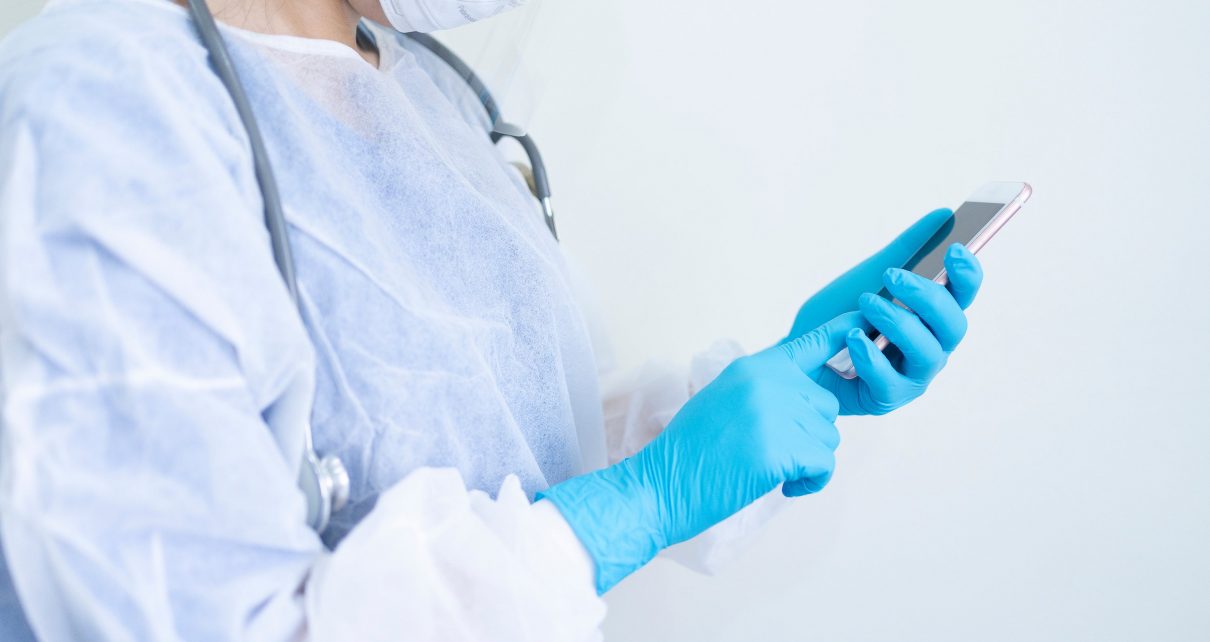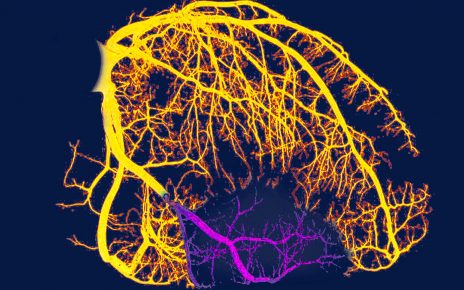The first wave of patients in Brooklyn were what we call the worried well, who arrived at the emergency room with cough, fever and flulike symptoms, concerned they had coronavirus. We would perform a nasal swab, or not, depending on whether we had COVID-19 tests available that day, and send them home with isolation precautions and advice to come back to the ER if they had trouble breathing.
Many of them came back with trouble breathing. The first step for just about everyone short of breath is to provide oxygen through a simple nasal cannula or face mask. For many, that was enough—we performed the usual tests (blood work, chest X-ray) and admitted them to the hospital so that they could continue to receive oxygen until they recovered.
Some patients weren’t stabilized with low-flow oxygen therapies, however, and this left us with a quandary. Normally, we would apply more aggressive respiratory support modalities, such as a “high-flow nasal cannula,” which uses specialized machinery and humidification to deliver far more oxygen than a standard throwaway cannula; or “noninvasive ventilation” which is usually a mask that you fit over the mouth and nose, and which can blow oxygen into the lungs under pressure (many people with sleep apnea use CPAP, a form of noninvasive ventilation, at night).
But recommendations coming out of China and Italy—countries that drew the short straws in the coronavirus pandemic—were that we should skip over these therapies in favor of intubation, where we make the patient unconscious, insert a breathing tube into their trachea and put them on a mechanical ventilator. The thinking at that time, which was just a few weeks ago but feels like a different era, was that COVID-19 patients who required more than low-flow oxygen were going to progress to mechanical ventilation anyway, so you might as well skip the intervening steps. Furthermore, there was a lot of concern that high-flow nasal cannula and noninvasive ventilation would propel the patient’s virus-rich aerosols into the room, potentially infecting other patients and healthcare providers.
So, like everyone else, we adopted the “intubate early” paradigm, and sent this first round of sick coronavirus patients to the ICU on a ventilator. But the sick patients started arriving in bigger numbers—in one shift we intubated six patients—and it became clear that if we kept this up, we were going to run out of ventilators and ICU beds by the end of the week. On top of this, we were starting to get early studies out of China and Italy that showed alarmingly poor outcomes of patients on ventilators. Was intubate-early the right strategy?
Around this time, many of us started to notice an unusual phenomenon in people with COVID-19 lung disease. Every patient seen in the emergency department has their oxygen saturation—a marker of how completely blood is carrying oxygen to the tissues—measured at triage, using a device that fits over the finger, a pulse oximeter. A normal saturation is above 95 percent. Some COVID-19 patients, however had the kind of very low saturations that we associate with cyanosis and respiratory distress—but they were comfortably speaking to us or texting on their phones.
Nobody knows what to make of this, and this observation is so new that we don’t yet know how patients who are “happily desaturated” will fare. But it is very disorienting, because we rely heavily on oxygen saturation to determine how sick our patients are. Some have speculated that the virus causes a change in the molecule that carries oxygen (a hemoglobinopathy) that could confound pulse oximetry. Others suggest that COVID-19 mimics physiology seen at high altitudes, or pulmonary decompression sickness, when a diver ascends to the surface too rapidly.
Once a few of these anecdotes circulated, social media was flooded with them, and this has added another layer to the quandary: not only are we uncertain about when to intubate COVID-19 patients; one of the most important parameters we use to decide when to intubate seems in this disease to be deceiving us, for reasons no one yet understands.
Medical science answers questions through experiments and clinical trials, but by the time the usual process that moves medical science forward provides answers to critical questions around COVID-19, we will be months further into a pandemic that has already killed thousands and is grimly expected to kill orders of magnitude more.
Emergency medicine is informed by a robust body of research powered by the usual machinery––grant funding, institutional review boards, manuscript submission and revision. But, perhaps more than any other medical specialty, it is also is powered by social media. Many emergency clinicians stay current by reading medical blogs and listening to medical podcasts, some of which are produced by full-time teams of media professionals. If you want to know what’s happening in emergency rooms across the world, though, look on Facebook and Twitter.
Emergency and intensive care providers are deeply connected on social media platforms, and as COVID-19 swept through Seattle and into New York City, physicians caring for these patients started openly questioning received wisdom. While bedside clinicians were broadcasting perplexing findings caused by a novel pathogen, scientists who can elucidate the pathophysiology that will drive therapies began to take notice. The linkage of patient care to basic science, which until very recently would have taken months or years, is now happening over a period of hours.
COVID-19 is a new clinical entity, but because so many are affected in New York, some physicians have already developed significant experience with the disease. At the same time most hospitals in the country have yet to see a single severe case—but will, soon. Disseminating the knowledge accumulating in local coronavirus units to the rest of the country would traditionally be done through peer-reviewed case series published in medical journals, but we don’t have time for that.
So, our department has recruited research assistants, whose usual activities have been grounded by the coronavirus lockdown, to populate Web-based data forms that track people admitted with severe COVID-19 illness through their hospital stay. They chart the treatments these patients received and how they responded. This anonymized clinical database is available to clinicians and scientists across the world to study in real time to inform management decisions of patients who contracted the virus today but won’t require medical attention until two weeks from now.
Though COVID-19 has been propelled to a global pandemic by modern transcontinental travel, the tools to end it may also arise from the web of human connectivity that is unique to the modern world.




